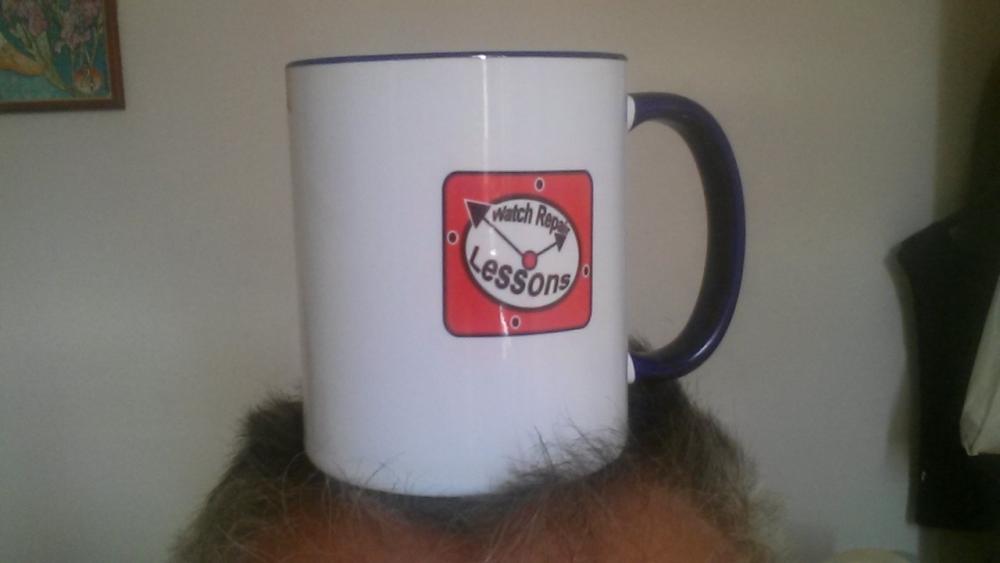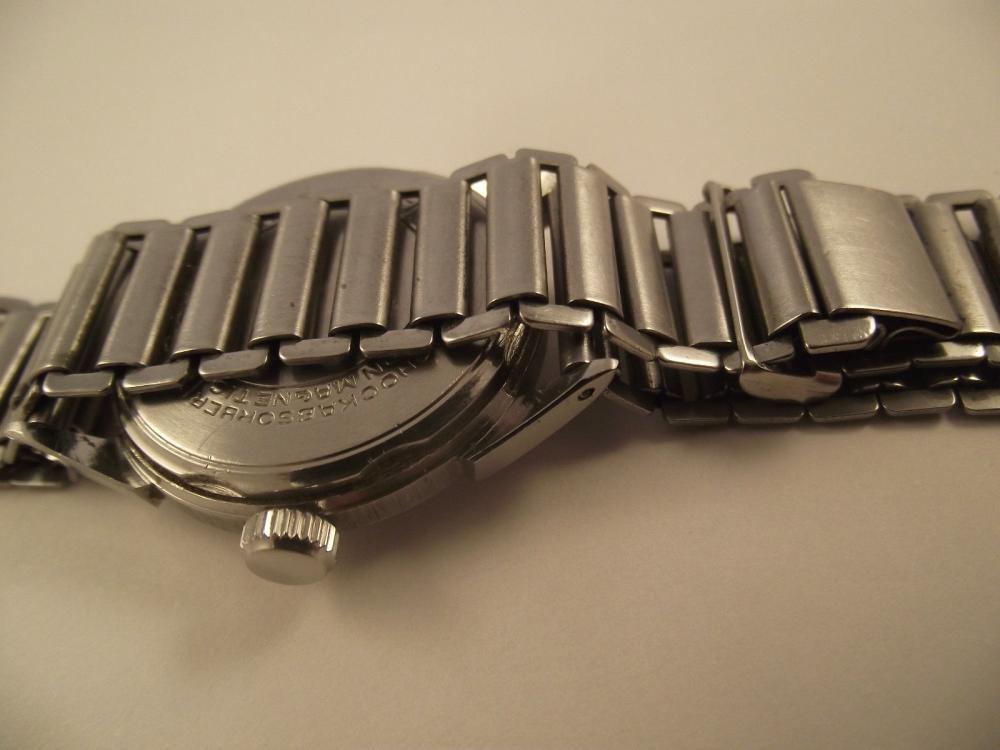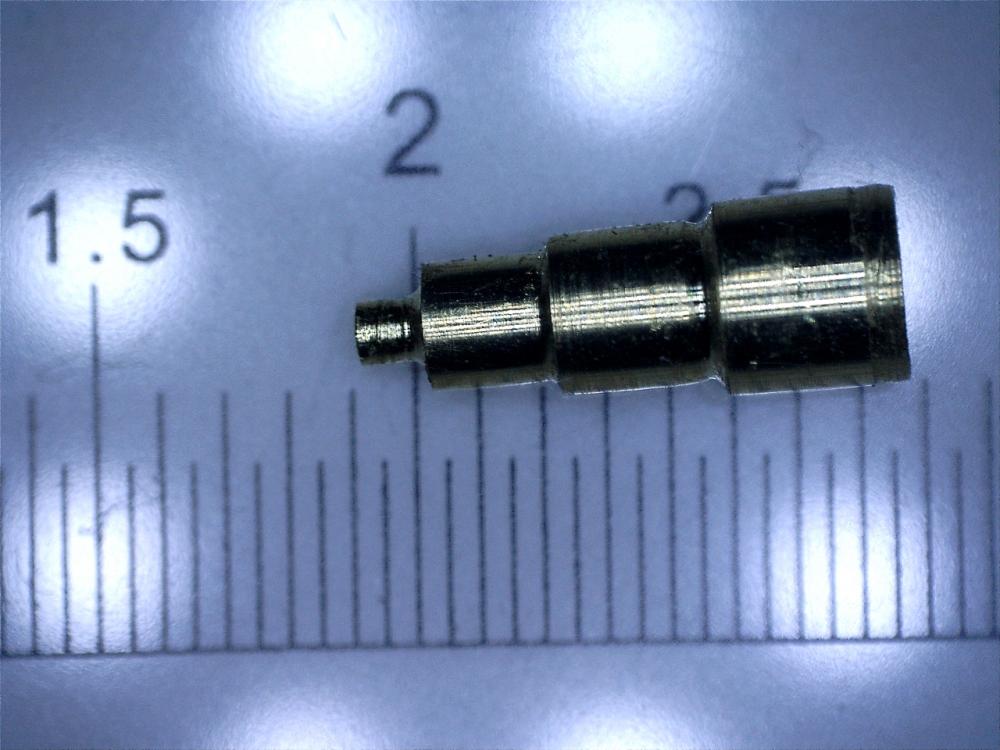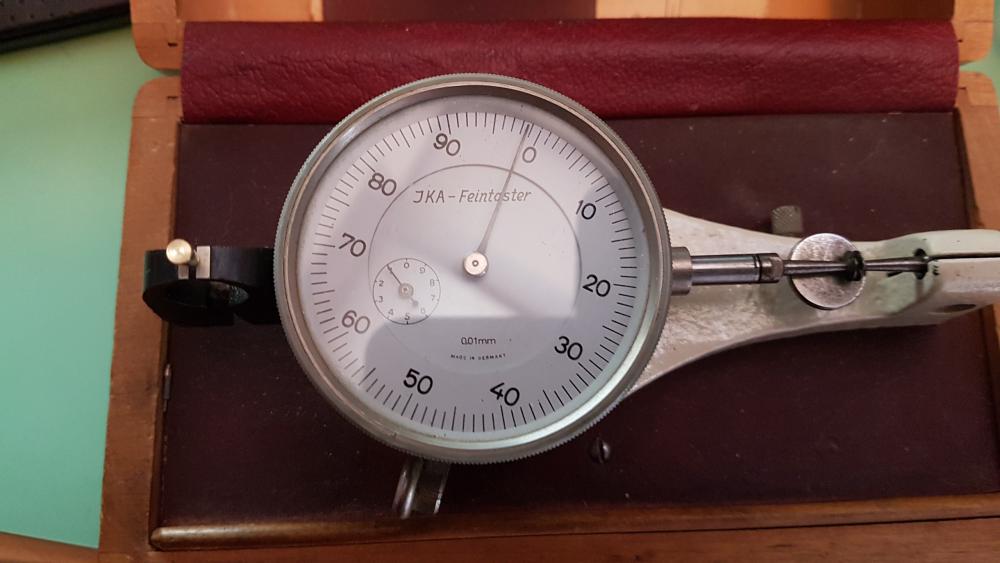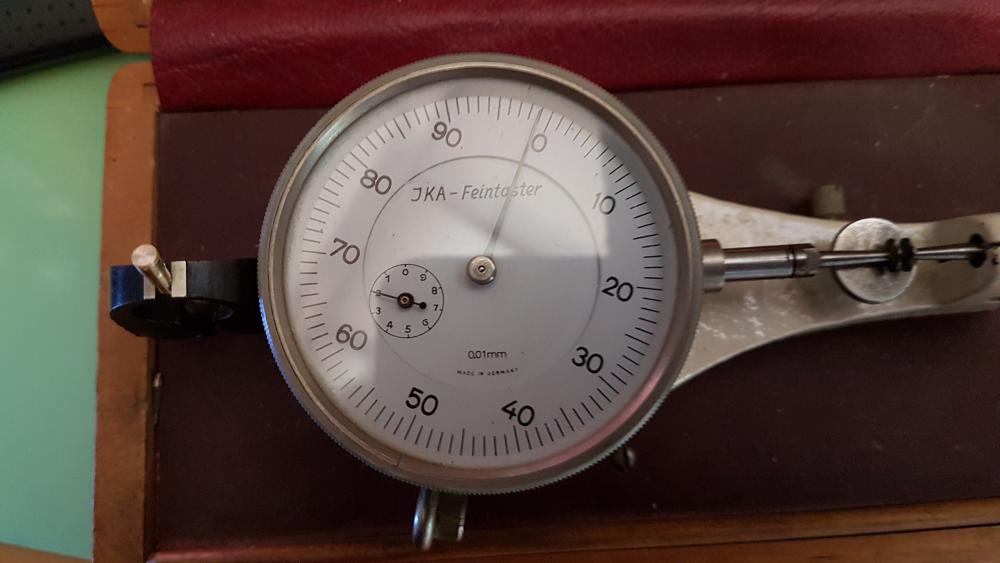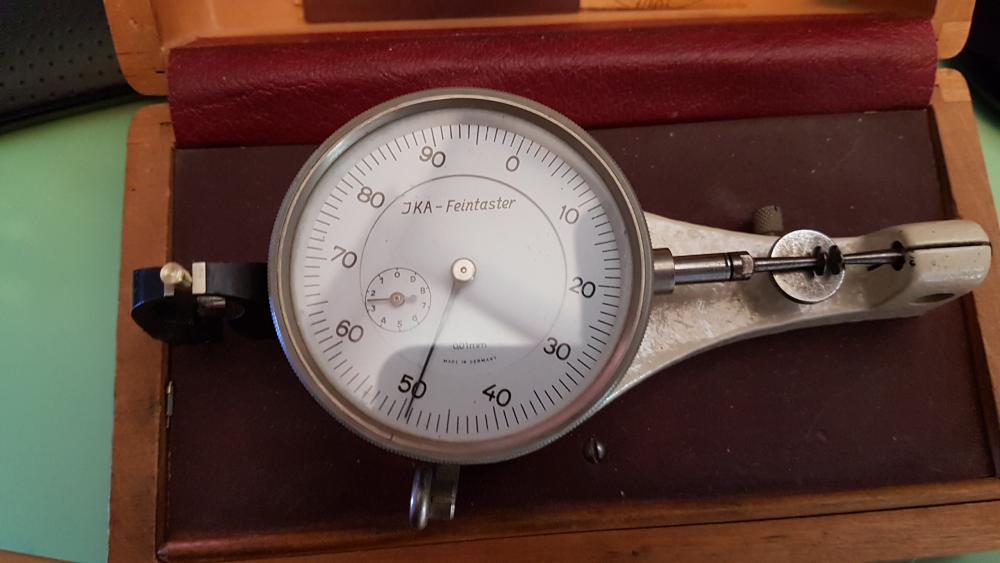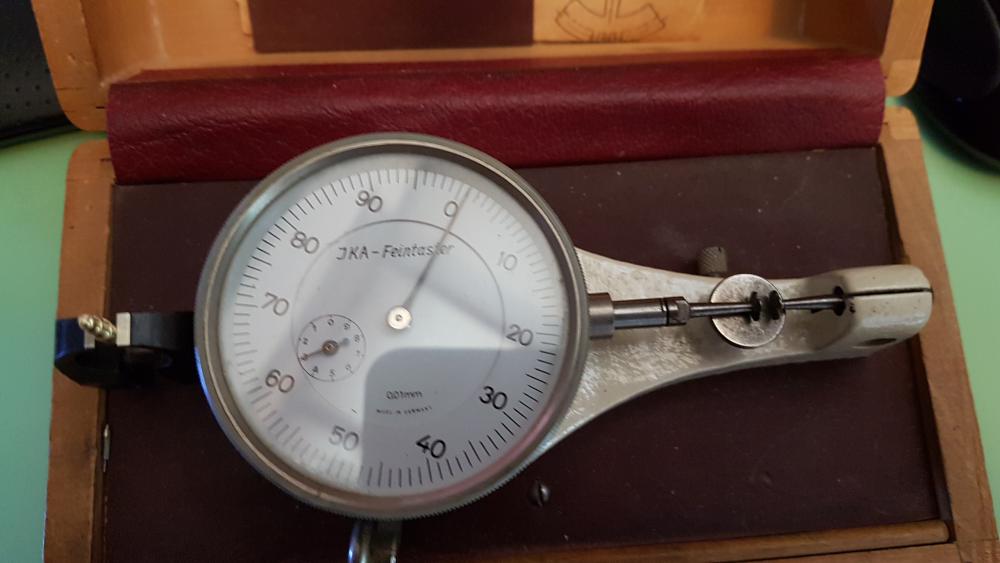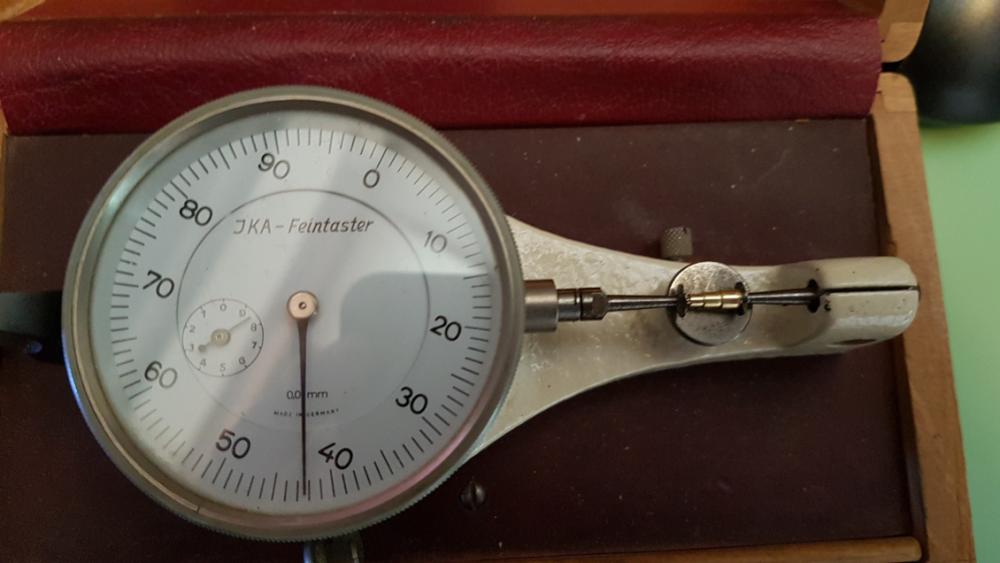Leaderboard
Popular Content
Showing content with the highest reputation on 04/17/17 in Posts
-
To understand adjusting a watch I have some links below reading material. Plus image from Omega's technical documentation's on what they expect. So Omega publishes the timing specifications for just about everything they make but this section is for watch is older which works nice for us as it's more generic. Even though their listing physical sizes of watches the other thing there showing is the running time. So modern watches tend to run much longer than their predecessors. Modern watches that may run 48 to longer at the end of 24 hours still have really decent amplitudes and their timekeeping is going to be much better than a watch that runs a little over 24 hours. Then interesting terminology things. Notice on the Hamilton pocket watch it says adjusted. What exactly does that mean? So on American pocket watches it may include things like temperature.. Where is modern watches there is nothing we can do about temperature.. Then the number of positions is an interesting question is what exactly does it mean? So for pocket watches the positions are slightly different than wristwatches such as normally pocket watches never run crown down. So another image from Omega showing their various positions. Note Rolex only times their watches in five positions. Then the attached PDF from ETA 6497 Showing the number positions is basically based on quality standard grade 2 positions something better three positions. So for the original question of confusing terminology of what exactly " regulated to 5 positions " We need to look at the pdf Link below labeled labeled X-D-DVH-Di-Im-N_EN. Looking at the very beginning X = mean value rate. So for X the more positions we add in the more closely they have to be if we want to meet whatever timing specifications were trying to achieve. Basically timing in positions regulated in positions just means watch was verified the various positions. Then a problem. Ever noticed how tech sheets don't really explain everything? Specifically tech sheets for watch repair? This is because it's assumed that the reader of the tech sheet has basic knowledge of watch repair. Then run down to your local bookstore how many books on how to repair an automobile versus how many books on repairing a watch? Repairing watches isn't exactly a dying art but the number of people doing it versus other things is considerably less so the amount of information available is less. Then conceivably at one time especially before timing machines this statement may have been correct " I mean is it a big secret passed down only to the next generation? " This is because whoever was adjusting the watches before timing machines existed was at the absolute top of the food chain in the watch shop because it did require full knowledge of everything and considerable skill which probably was passed down to the generations. http://www.witschi.com X-D-DVH-Di-Im-N_EN SCOPE / BEAT NUMBERS Test and measuring technology mechanical watches Witschi Training Course ETA 6497-1 Manufacturing Information.pdf2 points
-
Rather than throw them out Stephen, use them and cut the thick rubber ring with a pair of scissors when fitted. This greatly reduces the pressure and will at least allow you to use them. This is exactly what Inam doing just now to work my way though some tight ones.2 points
-
Length 320 or 340 does not matter at all. 0.12 or 0.13 does. With 0.12 you may have a slightly lower amplitude but will avoid knocking (esp. after a good cleaning). Frank2 points
-
wis1971 is the winner. You sure know your Longcase dials or do you have a good book.:D Here is the correct info. I put two dials in with the same date but that did not fool you. Dials are put into periods of date. What you might come across is a clock outside of the dates this is down to places away from what is in with the dial makes and their stock might be a bit behind the times to what is being produced in the cities, this happens a lot the further north you go, then you have to look at the case. A quick tip with the case is the door, long slender doors are early short wide doors are very late. Period one dials date from about 1770 to about 1800 and look more or less like this: Picture 1, The hour numerals are in Roman lettering (FROM I to XII) and the minute numerals are in arabic (5 to 60) numbered every five minutes (often called five minute numbering). Period one dials date from about 1770 to about 1800 and look more or less like this: The hour numerals are in Roman lettering (FROM I to XII) and the minute numerals are in arabic (5 to 60) numbered every five minutes (often called five minute numbering). Picture 2 and 3, Period two dials change in three distinct ways. Whereas period one corner decoration tends to be simple gold scrollwork or little flowers, fruit or the occasional bird, period two dials tend to have either geometric shapes, or shells, or abstract patterns – usually with a little more colour than period one. Period two dials start to lose the five minute numbering and this is replaced with fifteen minute numbering (15,30,45,60) possibly in slightly smaller size, around the hour numbers. The Hour numerals are often in arabic rather than roman style. Period two tends to cover the period 1800 to 1825-30 Picture 4 Period three dials are from 1830 onwards until the demise of longcase clockmaking about 1850-70. The minute numbering has disappeared completely and the hour numerals are back as Roman numerals, (I, II, III, IIII, V, VI, etc..) The corner decoration tends to be full colour scenes, often of country scenes, sometimes of the four seasons, countries (England, Scotland, Ireland, Wales) or the four continents. Sometimes there are specific corner or arch paintings to do with trade or commerce or perhaps with a religious or masonic theme. Thanks to all that took part and to those for looking. In my time I must have restored hundreds of these clocks from 30hour 8day and month duration, Many extremely early.2 points
-
2 points
-
I like to pick out a watch from my collection from time to time and give it a check and run to make sure it's working OK. I was wearing a particularly tight (round the wrist) shirt and sweater the other day, which make checking my watch difficult, so remembered I had a nice 1950s Marvin Hermetic on a Bonklip strap. The Bonklip was designed to be worn outside a shirt or jacket in cold conditions where it had to be referenced easily without constantly pushing up clothing - hence its popularity in aviation. Anyway, I checked out the movement - the regulator is bang in the middle - and have been wearing it for several days now. Perfect time running; a little stiffness when changing the time indicates a clean and lube is probably in order at some stage.1 point
-
1 point
-
Using my "General Resorts" ref: book spring is GR3515 Cal. 27 1.35 x 10.5 x 0.12 x 340mm ⦱10 HOWEVER there are many cal 27,s listed but followed by a letter so be absolutely sure it is just a cal. 27 IE Cal 27 M spring is GR3338 Cal. 27 M 1.35 x 10.5 x 0.13 x 320mm ⦱10.51 point
-
Last night I completed my first simple lathe project for my watch repair course. This is the first time I've used a graver on my lathe to make anything to a set dimension. I'll be the first to admit it has a number of flaws in it and I still need to improve a lot, but for a first try I think its ok. I started with a 1/8 inch diameter brass rod and had to turn it down to 1mm diameter for 1mm, 2mm for 2mm, 2.5mm for 2.5mm and 3mm diameter for 3mm, giving us a total length of 8.5mm. Here are the results below. Photo of part, I slipped facing off the end causing the scratching at the end of the larger diameter, also note the mistake at the transition from 2.5mm to 3mm caused by me squaring off the end. Total diameter should be 8.5mm, mine is at 8.42mm, so 0.08mm undersize. 1mm diameter is at 0.99mm 2mm diameter is at 1.99mm 2.5mm diameter is at 2.49mm 3mm diameter at 3.01mm I still need to do a lot more practice, but atleast its a start.1 point
-
I use both tick-o-tock and wild spectrum on my galaxy note tablet to adjust my watches. This is good for the first shot. Then I wear the watch for a few days and check the daily gain/loss using "timeis" as my time source. I then fine tune the adjustment. This seems to work on must time pieces. I do the same for pocket watches. I find the hamiltons are really accurate; with at lease 17 jewels. Sent from my iPhone using Tapatalk Pro1 point
-
I bought medium and they work for my long fairly thin fingers . Size 10-10,5 in normal gloves. But sometimes a large could work better at least for my thumb. The latex finger cots are stretchier then most other cots i tried? I stick with medium next time as it is a little work to have to sizes around. Usually only have a finger cots on my index finger when i work on the movement .1 point
-
I have chubby fingers and find Medium a little tight, so will be ordering Large next. DSC08996 by S STEEL, on Flickr1 point
-
Perfect watch adjusting is really time-consuming. As SturatBaker104 suggested starting with that book is a good way. One can only regulate the watch effectively with the regulator arm if the watch is in perfect condition otherwise. Moreover, adjustment start at the mainspring1 point
-
Hi... Much to my delight, the Timegrapher Model 1000 arrived around noontime. What a nice and handy piece of equipment it is! Background: Several weeks ago, I purchased two Seiko watches; one with 7S26 and another with a 7S36 movement. Since their arrival, I've been taking turns wearing them for a couple days in a row. At first, one was keeping time within in about +/- 17s/d and the other about 19s/d. In general, both tended to lose time each day. Through trial and error I adjusted the regulator and over a period of some 8 days or so, was able to get them running in the +/- 8s/d range. During those initial weeks, I had no idea what the beat error or amplitude measured. Upon analysis with the timegrapher, beat error (face down) was 0.7ms on one and 0.5ms on the other. Amplitude was (with angle set at 52) about 300 to 330 degrees. Without much difficulty, the beat error on both (face down) was adjusted to 0.0 ms and 0.1ms respectively and timing was set to about +2s/d. I discovered that after making each minor adjustment, it was helpful to dismount the watch from the holder and give it a couple gentle swings. Quite often, when the watch was placed back in the holder, it would not give exactly the same reading as prior to removing it. Basically, the gentle swings helped the adjustment "settle into place". I also noticed that with one watch, adjusting the speed more than a few seconds, would also change the beat error. Basically both (beat error and speed) had to be observed and adjusted simultaneously. So... moving the watch thru the 6 different positions gave surprisingly good results. The beat error did not change at all and amplitude remained in the same 300 to 330 range. The amplitude would momentarily go outside of those ranges while the position was being changed but, would settle-down within about 5 seconds. The speeds changed according to the different positions and in all cases, they dropped anywhere from 3 to 10s/d. For now, I adjusted the watches (face down) for +4. I chose that number somewhat arbitrarily with the thought that any position other than face down would result in a decrease. In all reality, when wearing a watch, it's highly unlikely (for me anyhow) that it will be face down. So, it's been 9 hours since both were adjusted. The one I'm wearing is dead-on! The one sitting on the table is 1.5s faster from when it was set but I admit that I intentionally changed it's position in random ways throughout the afternoon and evening. We shall see how they perform in the upcoming days. Regards Ray1 point
-
I think for most reasonable quality movements a variation of up to 30 seconds between different positions is acceptable except face up or down. You're always going to come across movements that perform far better than this, either through excellence of manufacture or flukes. The best performing movement to date, that I've seen is a Chinese Seagull ! With a variation of less than 2 seconds between positions, though I expect this to be a fluke or am I being unfair. Also since acquiring a timegrapher (Cheap one) can't recommend these enough. Even the cheaper kind can give you a positive indication if your watch requires servicing but shouldn't be replaced as part of the recommended service intervals. Also if you start to get a higher second variation between positions this could be a good indicator of wear within the movement. Sent from my SM-T585 using Tapatalk1 point
-
Uh oh, this could spell trouble... I've been very happy to wear wristwatches most recently again and decided to dress-up some recently acquired Seikos with nice leather bands. While I was at it, I ordered a Model 1000 Timegrapher and will try my hand at observing their performance and possibly optimizing it. As things proceed, I'll document the observations and results in a different thread in an appropriate forum here. So far, I've truly enjoyed all the educational videos. 1st class materials for sure. Some day, I'd like to find a broken watch and try to repair it or possibly, purchase a very inexpensive new watch as a test specimen. Somehow, I get the feeling this might lead to a fun new hobby... We shall see... Regards Ray BTW: Here are the watches I now have. http://www.jomashop.com/seiko-watch-snk809.html http://www.jomashop.com/seiko-watch-snk803.html http://www.jomashop.com/seiko-5-mens-watch-snzg09.html1 point
-
If its like mine1) Pull off plastic reservoir2) unscrew holding screw3) Pull out old needle4) Reverse procedure1 point
-
You could also take the "squashed tree" approach and buy a copy of Practical watch adjusting by deCarle https://books.google.co.uk/books/about/Practical_Watch_Adjusting.html?id=cDKTPQAACAAJ&redir_esc=y&hl=en1 point
-
Thanks for letting us come along for the ride, it's great seeing an old classic come back to life. Cheers!1 point




